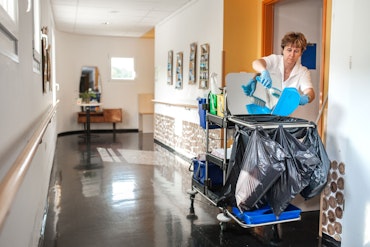Interest rate increase to impact people considering aged care
The Maximum Permissible Interest Rate (MPIR) has made the largest jump over a quarter since the Global Financial Crisis in 2008/09.
![<p>You can expect the MPIR change to have an effect on how much you pay for accommodation in an aged care facility if you are not yet living in a nursing home. [Source: iStock]</p>](https://agedcareguide-assets.imgix.net/news/articles/news/articles/19_7_2022-MPIR-increase.jpg?fm=pjpg&format=auto&w=550&q=65)
You can expect the MPIR change to have an effect on how much you pay for accommodation in an aged care facility if you are not yet living in a nursing home. [Source: iStock]
This change will affect the cost of residential aged care accommodation, but will be dependent on how you intend to pay for a nursing home room.
For those who are already in a home, this shouldn’t affect you unless you move facilities or move into a new room.
So what has happened?
There has been a large jump in the MPIR from the April to June quarter’s 4.07 percent to the July to September quarter’s MPIR of 5.00 percent – nearly a whole percentage increase.
The last big change the MPIR made was at the end of 2008, which was near the end of the Global Financial Crisis, when it fell from 11.31 percent down to 8.76 percent.
While the latest jump is relatively manageable currently, experts, like Rachel Lane of Aged Care Gurus, believe this is likely the beginning of an upward trend in aged care costs over the next few years.
Why is it important?
You can expect the MPIR change to have an effect on how much you pay for accommodation in an aged care facility if you are considering moving into a nursing home.
In Australian aged care, the MPIR is an interest rate set by the Government, which is used to figure out how much you need to pay for accommodation in aged care.
Over the last few years, the MPIR changes have been very incremental and it hasn’t reached the 5.00 percent mark for the last 2 years.
It is expected that this quarter’s MPIR increase is likely foreshadowing rising aged care costs – just as many other big expenses, like mortgages, are starting to rise. The next review of the MPIR is on 1 October.
Will I be affected?
This increase is mainly a change for those who are yet to move into aged care or are considering moving into a different facility. It can also affect you if you want to move to a different room in your facility.
The MPIR is a fixed rate from the day you agreed with your aged care provider on a price for your accommodation. For a low means resident, it is the rate on the day you enter care at a facility.
Any changes in the MPIR, whether an increase or decrease, won’t affect you.
But for those wishing to move into aged care, it is a sign that costs for nursing homes will grow.
How you are affected will depend on the method of payment you are considering for residential aged care – either a Refundable Accommodation Deposit (RAD), a Daily Accommodation Payment (DAP), or a combination of both the RAD and DAP.
Or if you are a ‘low means’ resident, whether you pay a Refundable Accommodation Contribution (RAC) or a Daily Accommodation Contribution (DAC).
Considering your options
Before moving into an aged care home, you have to consider what is the best payment option for you, which could be a lump sum or a daily payment for your room.
If you don’t have the available money for a lump sum or you don’t want to sell your family home, you may need to pay a daily accommodation payment.
Any person who is intending to pay a daily payment for a bed in aged care will be affected by the change in the MPIR.
The cost of daily payments will be more expensive compared to last quarter. For example, if you accepted a bed in an aged care facility at $500,000 prior to July, you would have been paying $55.75 a day for your accommodation.
This new MPIR change will increase the payment to $68.49 a day. Over a year, this would be an increase of $4,650 in aged care payments.
Paying for your accommodation is only one part of paying for aged care and doesn’t include the cost of receiving care from a facility.
If you need more advice on sorting out aged care costs, speak to a financial aged care expert. You can find a financial advisor in your area on AgedCareGuide.com.au.























